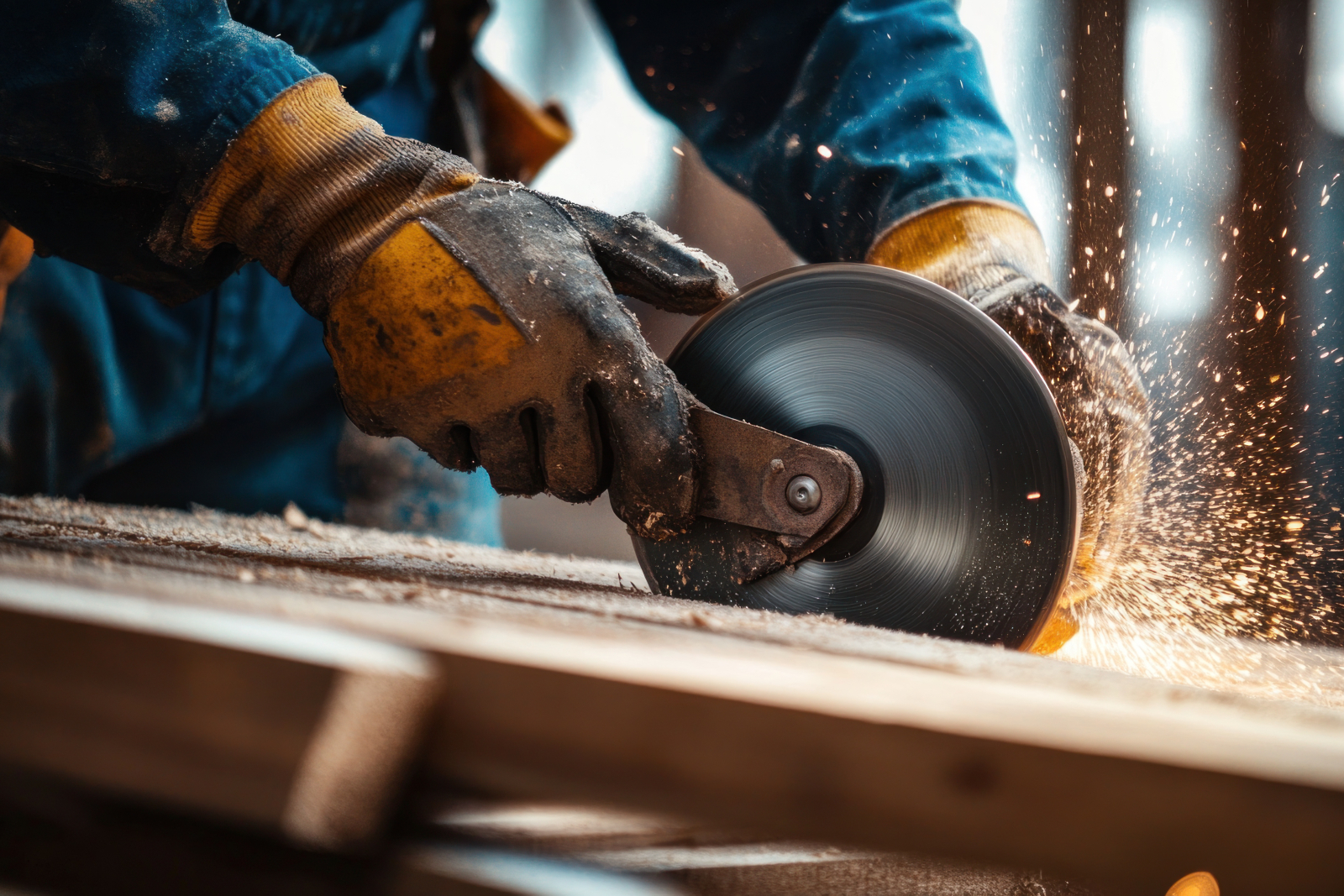
Cuts and lacerations are among the most common injuries on construction sites, often caused by sharp tools, machinery and materials. While some injuries may be minor, others can be serious – requiring medical attention and sometimes leading to lost workdays, permanent disability or even fatalities.
Understanding the causes, prevention strategies and appropriate responses is crucial to ensuring the safety of all workers. Read on to learn more in our latest ‘Focus on Safety’ blog.
Cuts and laceration injuries in construction
According to the Health and Safety Executive (HSE), cuts and lacerations account for a substantial number of injuries in the construction industry. One survey of construction workers found that 43% had sustained this type of industry at some point during their career.
- Cuts are typically caused by sharp objects (like knives or glass) and result in separation of the skin.
- Lacerations are also caused by sharp objects, but they refer to torn or jagged wounds.
These injuries can result in workers needing time off, reduced productivity and added costs for employers due to medical treatment and compensation claims. In severe cases, they can lead to long-term disabilities or, in rare cases, fatalities.
More positively, with proper training, appropriate protective measures and regular maintenance of equipment, the majority of these injuries are preventable.
Common causes
When it comes to cuts and lacerations, there’s no getting around the fact that construction sites can be full of potential hazards Here are some of the most common:
- Sharp tools and equipment: Tools such as saws, knives and grinders are essential in construction but can cause serious injuries if not used properly. Ensuring workers are trained in the correct handling of these tools is critical.
- Materials: Handling sharp or jagged materials like glass, metal and wood can lead to cuts, especially if workers are not wearing the correct protective gear. Ensuring proper PPE (such as gloves and protective clothing) is worn at all times is vital.
- Machinery: Drills, cutters and other heavy machinery with moving parts present a high risk of lacerations. Safety guards and proper procedures must always be in place to reduce these risks.
- Poor housekeeping: Cluttered work areas with scattered tools, debris or sharp objects can easily lead to accidents. Keeping the worksite tidy is an easy but effective way to prevent injuries.
Key prevention strategies
As with other safety concerns like slips, trips and falls, preventing cuts and lacerations on construction sites often comes down to a combination of good housekeeping, appropriate safety measures and training. Here are some of the most effective strategies for reducing the risk:
- Clear safety procedures: Ensuring that robust safety measures, like using safety guards on machinery or ensuring workers follow proper cutting techniques, can significantly reduce the chances of an accident.
- Proper training: Regular training sessions and safety briefings help to ensure that workers are confident in the safe use of tools and machinery, thereby reducing the risk of accidents.
- Personal protective equipment (PPE): Gloves, protective clothing and face shields can significantly reduce the severity of cuts and lacerations. PPE should always be in good condition, correctly fitted and enforced across the site.
- Tool maintenance: Regular inspection and maintenance of tools and machinery prevent malfunctions that could lead to injuries. Any damaged or faulty equipment should be taken out of service immediately.
- Good housekeeping: Keeping work areas clean and free of sharp objects and debris is essential. Properly storing tools and materials reduces the risk of accidents and makes the site safer for everyone.
In the event of an injury
If someone suffers a deep cut or laceration that exposes fat, muscle or bone, seek emergency medical attention immediately. While waiting for help to arrive, apply pressure to the wound with a clean cloth or dressing to stop the bleeding and keep the injured person comfortable.
For less severe cuts, clean the wound as soon as possible, apply pressure to stop the bleeding and cover it with a sterile dressing. If the cut is on a joint (such as a finger or wrist), use a splint to prevent movement, as bending can reopen the wound.
In the days after an injury, it’s important to monitor the wound for signs of infection, such as redness, swelling or heat, and seek further medical advice if necessary.
See it, sort it
Cuts and lacerations are a significant risk in the construction industry, but with proper training, good housekeeping and adherence to safety procedures, the risks can be greatly reduced. Maintaining a clean and organised site, ensuring tools are well-maintained, and wearing the right protective gear all contribute to a safer working environment.
As with any hazard on site, everyone has a role to play in reducing the risk of injury. So, remember, if you see a problem or risk factor, sort it!
Have any additional tips for preventing cuts and lacerations? Share them over on our Facebook or LinkedIn pages.
17.10.2024
Feature image: Freepik
More from our ‘Focus on Safety’ blog series:
Focus on Safety – Addressing the persistent problem of slips, trips and falls








